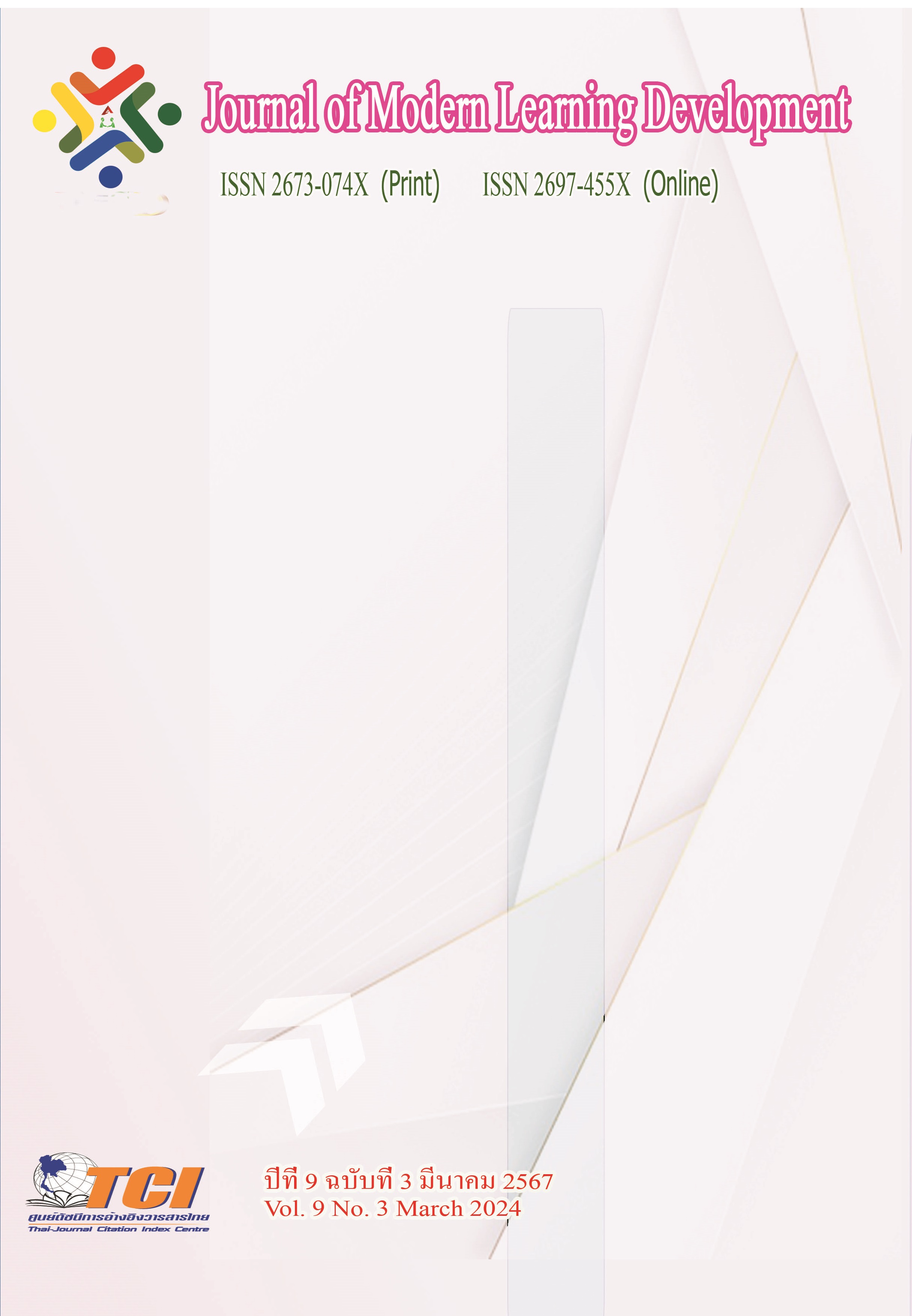Effects of an educational program on pain relief preparation of patients after receiving shock wave lithotripsy at Surat Thani Hospital
Main Article Content
Abstract
This research is a quasi-experimental research. (Quasi-experimental research design), one group measuring results before and after the experiment. The objectives are to 1. Compare pain. and suffering of patients after receiving stone dissolving treatment. 2. Compare knowledge regarding preparation for pain relief of patients after receiving stone dissolving treatment, and 3. Analyze satisfaction. Patient satisfaction after receiving stone removal treatment after participating in the program From October 2023 - March 2024, the sample group was gallstone patients who received shock wave lithotripsy. Surat Thani Hospital, 30 people, calculated the sample size with the G*Power program and set the power of test (Power of test) at the level of 0.82 and selected specific samples according to the specified qualification criteria. Data were collected using a questionnaire. Statistics used in data analysis include descriptive statistics such as frequency distribution, percentage, mean, and standard deviation. Inferential statistics include Paired t-test statistics.
The results of the research found that 1) The pain assessment results (Pain Scale) before and after entering the program found that there was an average of pain scores. They are significantly different at the 0.05 level. 2) After joining the program Patients have a high level of knowledge. And when comparing the average knowledge before and after joining the program, it was found that they were significantly different at the 0.05 level, as shown in Table 2. 3) Overall, after joining the program, patients were at a high level of satisfaction. The average value is 4.90. Therefore, in order to expand the research results to be able to be used in a variety of ways. The program can be applied as a guideline for preparing patients before and after surgery. To make patients aware of events that will happen to them, their pain, how to behave and manage their own pain correctly and appropriately. To provide nurses with written nursing guidelines that can be used in the same direction. This will result in patients receiving the same standard of care.
Article Details
References
โรงพยาบาลจุฬารัตน์ อินเตอร์ 3. (2566). คำแนะนำสำหรับผู้ป่วยสลายนิ่ว. ศูนย์รักษาโรคมะเร็ง โรงเรียนจุฬารัตน์ อินเตอร์ เฮลท์.
พฤทธิ์ ธนะแพสย์. (2564). การเปรียบเทียบประสิทธิผลการใช้เครื่องควบคุมความปวดด้วยตนเองกับการระงับความรู้สึกโดยการบริหารยาทางหลอดเลือดดำในการสลายนิ่วด้วยคลื่นเสียงกระแทกในผู้ป่วยนิ่วในไตและท่อไตส่วนบน. ร้อยเอ็ดเวชสาร. 8 (1), 11-23.
ศิลดา การะเกตุ และคณะ. (2560). การศึกษาเปรียบเทียบระดับความเจ็บปวดก่อนและหลังจากการรักษาโคลนสมุนไพรพอกเย็น ร่วมกับการนวดแผนไทยในผู้สูงอายุที่มีอาการปวดเข่า กลุ่มงานแพทย์แผนไทยและแพทย์ทางเลือก จังหวัดพะเยา. >เชียงรายเวชสาร. 9 (2), 115-124
อรวรรณ ทรัพย์วรฤทธิ์. (2560). ผลของการให้ข้อมูลอย่างมีแบบแผนต่อการลดความวิตกกังวลและความพึงพอใจในผู้ป่วยที่ได้รับการสลายนิ่วด้วยเครื่องสลายนิ่วคลื่นความถี่สูงโรงพยาบาลสุราษฎร์ธานี. วารสารวิชาการแพทย์ เขต 11. 31 (4), 639 -648.
Dodd, M., Janson, S., Facione, N., Faucett, J., Froelicher, E. S., & Humphreys, J., et al. (2001). Advancing the science of symptom management. Journal of Advanced Nursing. 33 (5), 668-676.
Elke Bovelander. (2019). The Influence of Pain on the Outcome of Extracorporeal Shockwave Lithotripsy. Curr Urol. 8;12 (2), 81-87. doi: 10.1159/000489424.
Tilahun Alelign. (2018). Kidney Stone Disease: An Update on Current Concepts. Adv Urol. 4:2018:3068365. doi: 10.1155/2018/3068365. eCollection 2018.


